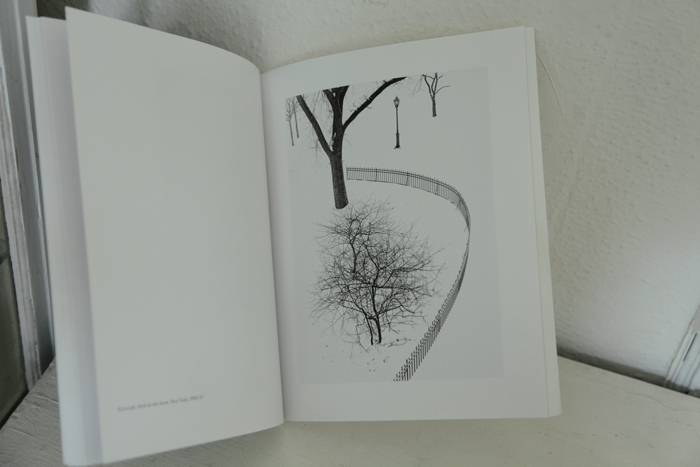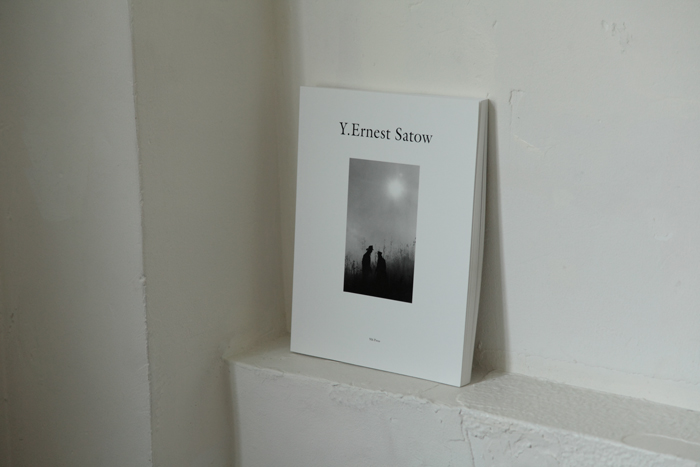Y.Ernest Satow
「アーネスト・サトウの残した数々の木々や鳥や雪景色の写真を見るとき、それがニューヨークのリバーサイドパークで撮られた写真だったりするのに、その言い知れぬ繊細さと大胆な単純化の美が、日本の水墨画とそっくりであることへの感動的な驚き。それらは アーネスト・サトウが求めてやまなかった西洋と日本の二つの文化の理想的な融合のユートピアなのである。」
―「アーネスト・サトウ/善きモダニズムの伝道師」『Y・アーネスト・サトウ写真集』(講談社、1998年)40~41頁
この評の要は、やはり、「西洋と日本の2つの文化の理想的な融合」という言葉にあります。西洋対日本の二元論はいわば日本の近代化の宿命のようなものでもあり、多くの美術家・建築家・作家の心をとらえて離さないテーマでしたが、アーネスト・サトウにとってはまさに自身のアイデンティティそのものでした。そう考えると、この写された写真、とくに風景写真は、アーネスト・サトウの自画像のように見えてきます。そして、それは西洋と日本の文化の融合であると同時に、西洋でもなければ日本でもないイメージの表現であったのではないかとも思えてきます。アーネスト・サトウの写真には、どことなく寂しさが感じられるからです
 PHOTOGRAPHY BY KAZUO MINATO
PHOTOGRAPHY BY KAZUO MINATO
- No.006
- Y.Ernest Satow 916Press
- TUESDAY, 18st JUNE, 2013 by Yoshiyuki Morioka
When we think of Y.Ernest Satow, the first thing that comes to the minds of old and used book handlers like me is the young Englishman Y.Ernest Satow, author of “A diplomat in Japan”. However, this book is a photograph collection by a photographer with the same first and last name. Y.Ernest Satow was born in 1927 (Showa 2) to a Japanese father and an American missionary mother in Hongō, Tokyo. He worked as a photo journalist for magazines like “LIFE”in 1952 and in 1968 he transferred to Kyoto City University of Arts, where he took a position teaching photographic technique and history of photography.
Before the book was published, a photograph collection had been published by Kodansha, but it was out of print for a long time and could only be accessed through feature topics. It was therefore a much-expected volume for his fans.
Pupil of Kyoto City University of Arts and appropriation artist Yasumasa Morimura had the following to say about the characteristics of Y.Ernest Satow's photography:
“When I look at the numbers of photographs of snow scenery or birds or trees that Y.Ernest Satow left behind, even though they're photographs taken at Riverside Park in New York, I'm surprised and impressed at their indefinable delicacy and the bold yet simplistic beauty's resemblance to Japanese ink paintings. They're a utopia of the ideal fusion of the two cultures—Japan and the West—that Y.Ernest Satow sought endlessly.”
― “Y.Ernest Satow / Yoki Modanizumu No Dendōshi””Y.Ernest Satow Selected Photographs”(Kodansha, 1998) p. 40-41.
The key point to this evaluation, of course, is in the words, “The ideal fusion of two cultures—Japan and the West”. The dualistic theory of Japan versus the West was both a sort of fate of Japan's modernization so to speak and a theme that captivated the minds of many writers, architects and artists. For Y.Ernest Satow it was his very identity. Viewed in this light, the photographs in this photograph collection, especially those of scenery, look like a self-portrait of Y.Ernest Satow. It looks like it was an expression of things neither Western nor Japanese and at the same time is a fusion of Japanese and Western cultures. That's because there is a loneliness in his photography.









